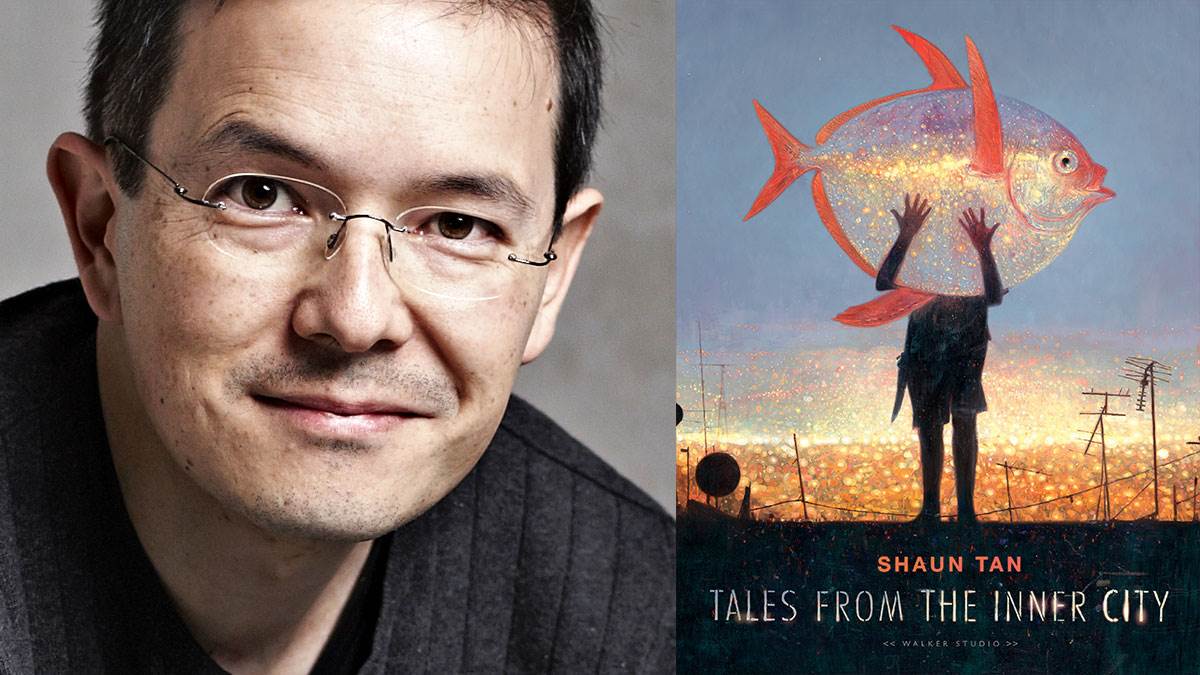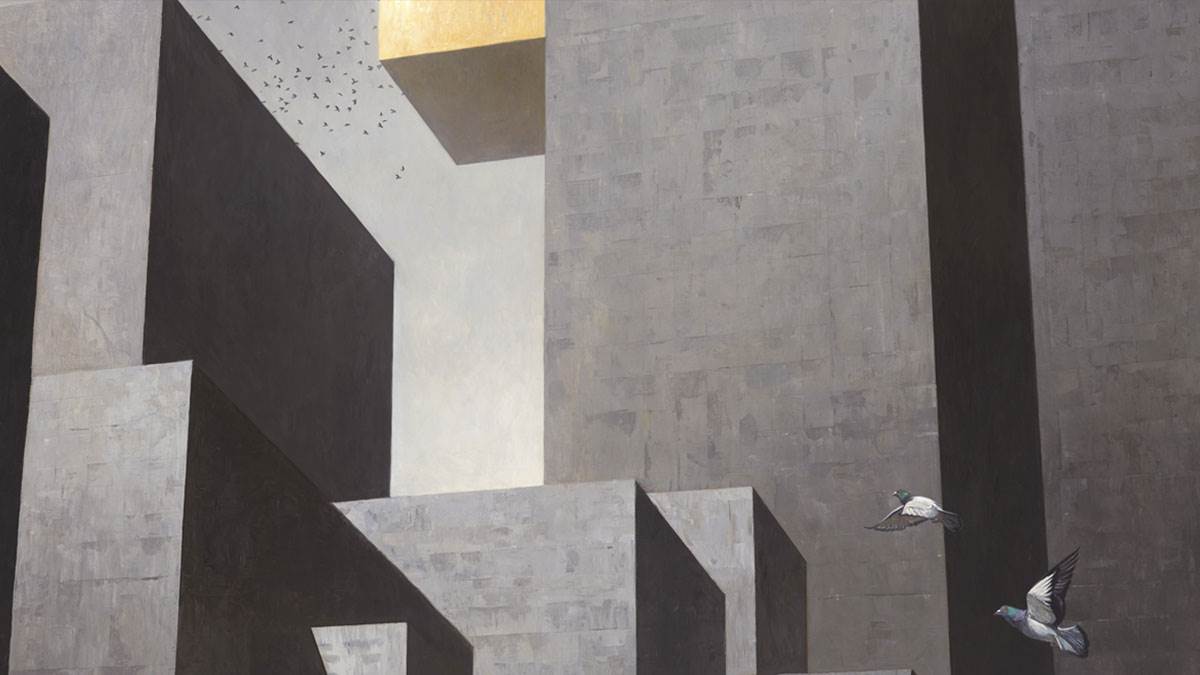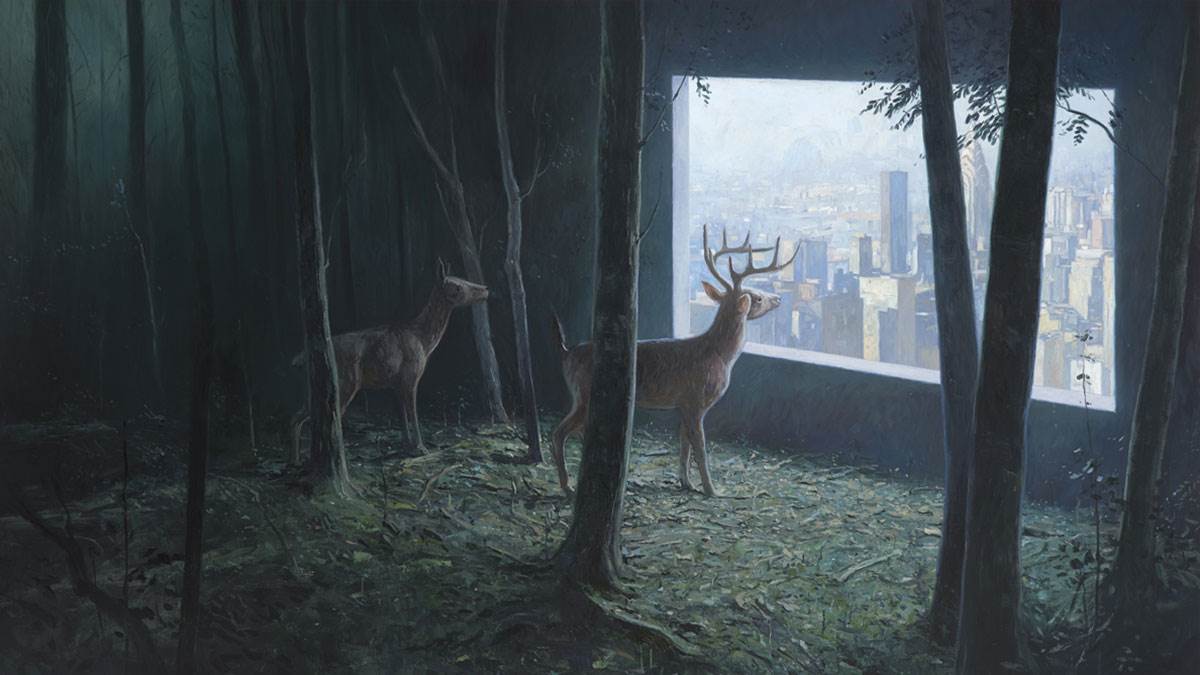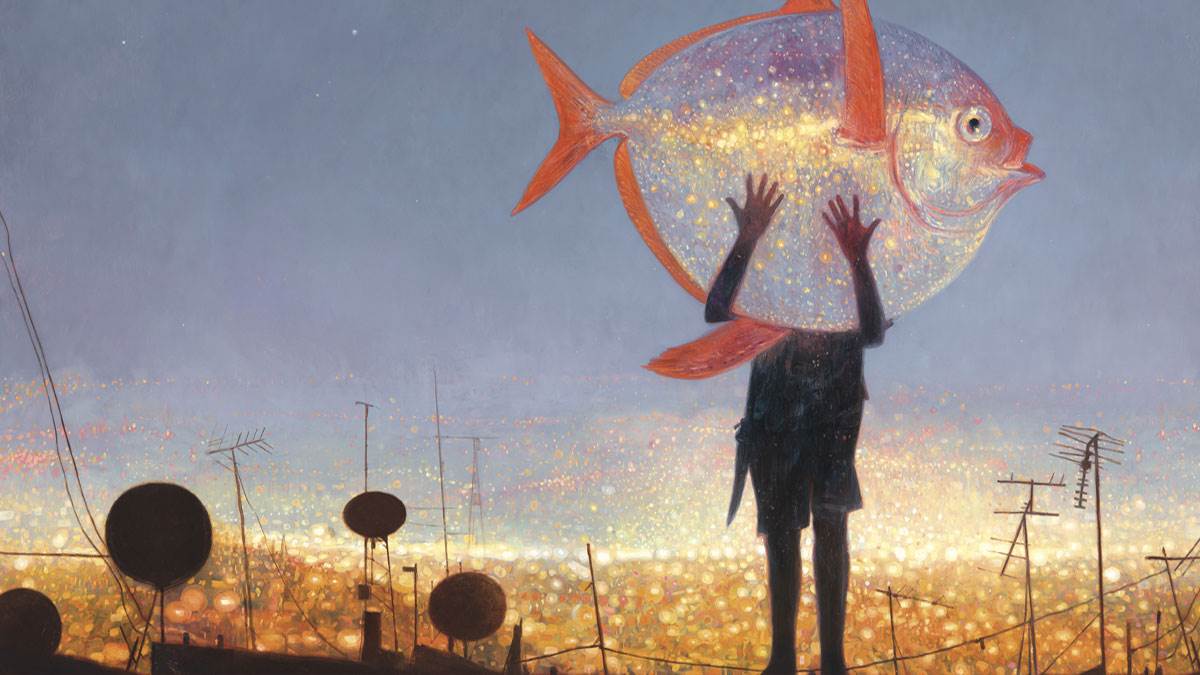Incredible artist Shaun Tan on illustrating 'the kind of cities you walk through in dreams'
Published on: 05 November 2018
Artist and author Shaun creates the kind of worlds that take your breath away. He talks us through his career and latest project, which is all about cities – with a twist.

First, what do you love about drawing and painting the city as a subject?
Since living close to an urban centre, I’ve come to appreciate the aesthetics of business districts and industrial structures. Much of this experience has filtered naturally into my stories and illustrations: reflections on glass, the accidental compositions of geometric shapes, shadowy canyons between buildings, things like that…
From making so many paintings over the years, I realise there is not much difference between urban and natural landscapes. They have both grown and developed organically over time, based on function, wear and perseverance. Although cities seem more conscious and planned, they are very much like jungles or hives. A big city is a mass of strangers working together towards various common goals and impulses. To an alien anthropologist, it might seem like another forest or coral reef. Humans are, after all, just another kind of animal, living in a habitat that helps them grow and stay safe.
Cities sometimes get overlooked in favour of a rural ideal in children’s books, but more children live in cities than anywhere else…
Yes, that’s a good point. In some ways, cities are so rapidly evolving that it’s hard to think of them as traditional or universal or “timeless” locations for stories.
I certainly enjoyed growing up in wild and bushy places along the West Australian coastline, which seemed very ancient and enduring, and often wondered what it was like for inner city kids, being quite far from nature.
Is it very different? I’m not sure. I think cities do have a magic or their own. In terms of multicultural experience, you can see such a cross-section of different kinds of living. Cities are like vast railway stations of experience, full of stories and hidden meanings.

Did you base your paintings in Tales from the Inner City on any cities in particular?
Not really, and I generally avoid using city names. That said, New York frequently came to mind, as well as Melbourne and some large Asian cities, but only as scaffolding to hang thoughts on.
Essentially, I think of the cities described in my stories as entirely fictional places, the kind of cities you walk through in dreams. That’s the kind of mental space I’m trying to side up to when writing and painting; that mirror world where things are a bit loose and undefined.
What inspired the project? And what made you think of writing animal stories set in cities?
Partly it’s the contradiction within that idea: the fact that cities are environments tailored for only one species of animal, and to some extent they deny the existence of other animals (although forced to grudgingly tolerate pigeons, rats, foxes and the like). There is something evocative about putting a wild animal, especially an exotic one, in an urban environment. It's a kind of visual rupture that invites so many other thoughts, a collision of realities. Good stuff for stories!

I had already completed a volume of stories drawn from childhood memories, Tales from Outer Suburbia, in 2008. In The Arrival, I’d also explored the idea of navigating a huge, foreign metropolis, filled with strange animals. A lot of my stories, I notice, naturally gravitate towards animals as central metaphors. It may be because they are such a great entry point for writing about people.
We look at ourselves more effectively from a non-human point of view; like standing back from a picture. I suppose that’s always my interest as either an artist or writer – trying to find an alternative point of view. I think all creative people who consider animals are doing just that. Ultimately, it comes back to human self-analysis.
You’ve made some incredibly powerful and beautiful wordless picture books in the past – why are wordless books important?
They are very generous to a reader – regardless of age, ability or cultural background. They are also a terrific discipline for a storyteller, as you have to solve all sorts of narrative problems without the usual convenience of words. In some ways, it’s a return to a pre-literate state, learning about things through pure observation, or else letting whatever narrative that enters your mind run free. It can lead a story in unexpected directions, and there are no “wrong” understandings.

See our favourite wordless picture books
Last, can you tell us three of your favourite children’s books set in cities?
Gosh, that’s an interesting question. The first that comes to mind is The Big Bazoohley by Peter Carey (1995), which interested me when I read it because it deals with both an inner city environment (Toronto) and has a lot to do with getting money, which is a theme kids think about a lot but is maybe not written about much in children’s literature.
For a very different kind of city, John Christopher’s The City of Gold and Lead (1967) had a big influence on my imagination as an 11 year old, and got me interested in science fiction. Essentially, some adolescents allow themselves to be enslaved in an alien city, hoping to undermine it.
Another good urban picture book is the Kate Greenaway-winning Way Home (1995) by Libby Hathorn and the late Gregory Rogers, a wonderful Australian illustrator. It is unusual and fairly uncompromising (for a picture book) in its representations of the darker realities of street life, as an apparently homeless boy tries to look after a stray cat.
Topics: Features






Add a comment